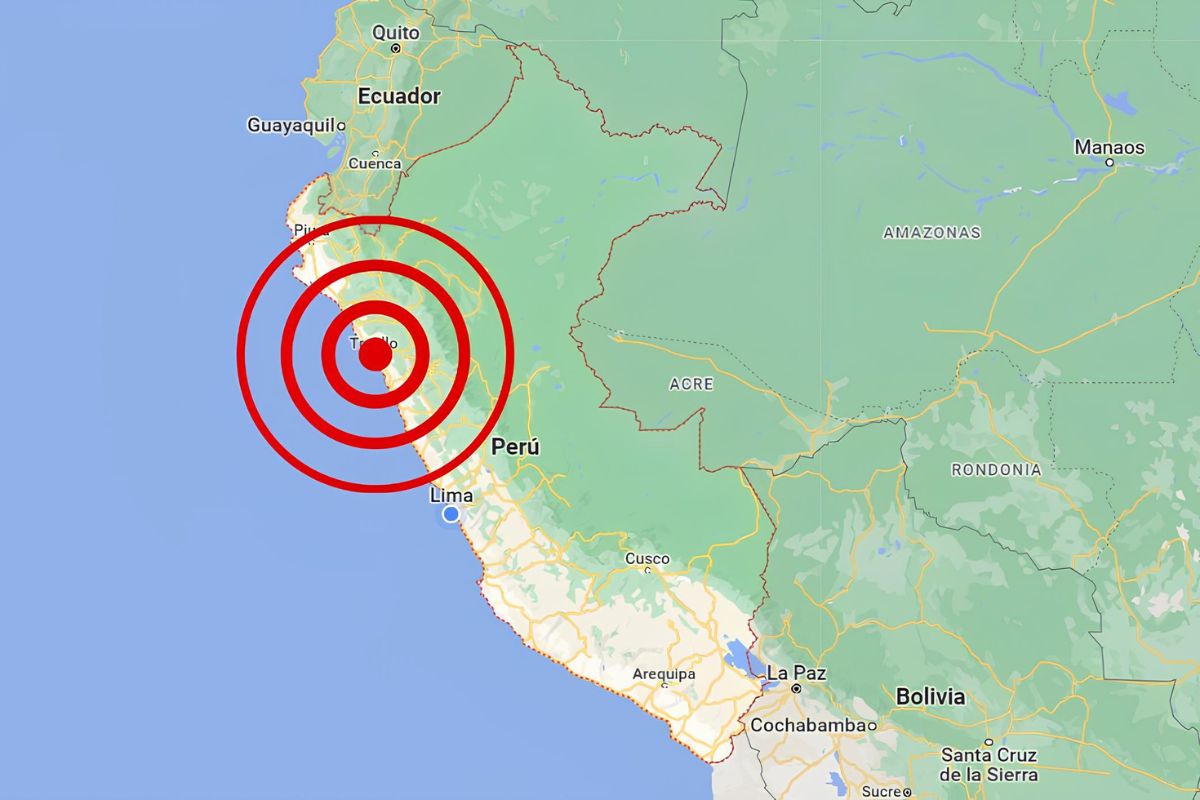
Temblor hoy—Spanish for "earthquake today"—is a term that has become increasingly relevant in recent years. With natural disasters on the rise, understanding seismic activity is more crucial than ever. But what exactly is a temblor? A temblor is a sudden shaking of the ground caused by the movement of tectonic plates beneath the Earth's surface. These movements can lead to devastating consequences, affecting lives and infrastructure. Knowing the facts about temblors can help you stay informed and prepared. From the science behind these quakes to historical events, this blog post will cover 35 intriguing facts about temblors. Buckle up, because the ground beneath your feet might just have a story to tell!
What is a Temblor Hoy?
A temblor hoy refers to an earthquake that has occurred today. Earthquakes are natural phenomena caused by the sudden release of energy in the Earth's crust, resulting in seismic waves. These events can vary in magnitude, causing anything from minor tremors to significant destruction.
- Earthquakes are measured using the Richter scale, which quantifies the amount of energy released.
- The epicenter is the point on the Earth's surface directly above where the earthquake originates.
- Earthquakes can occur due to tectonic plate movements, volcanic activity, or human activities like mining.
- Seismographs are instruments used to detect and record the intensity and duration of earthquakes.
- The Pacific Ring of Fire is a major area in the basin of the Pacific Ocean where a large number of earthquakes and volcanic eruptions occur.
How Do Earthquakes Happen?
Understanding the mechanics behind earthquakes can help in grasping their unpredictability and potential impact.
- Earthquakes occur when stress builds up along geological faults or by volcanic activity.
- The Earth's crust is divided into several tectonic plates that float on the semi-fluid asthenosphere.
- When these plates collide, pull apart, or slide past each other, they can cause earthquakes.
- The focus or hypocenter is the actual location within the Earth where the earthquake starts.
- Aftershocks are smaller quakes that follow the main shock and can continue for days or even months.
Historical Earthquakes
Throughout history, numerous significant earthquakes have left their mark, shaping our understanding and preparedness.
- The 1906 San Francisco earthquake had a magnitude of 7.9 and caused widespread destruction.
- In 2010, a devastating earthquake struck Haiti, measuring 7.0 on the Richter scale.
- The Great Chilean earthquake of 1960 is the most powerful recorded, with a magnitude of 9.5.
- Japan's 2011 Tōhoku earthquake triggered a massive tsunami, leading to the Fukushima nuclear disaster.
- The 2004 Indian Ocean earthquake and tsunami affected 14 countries, causing over 230,000 deaths.
Earthquake Preparedness
Being prepared for an earthquake can significantly reduce the risks and potential damage.
- Emergency kits should include water, food, first-aid supplies, and essential medications.
- Drop, Cover, and Hold On is a safety drill recommended during an earthquake.
- Structural engineering advancements have led to the development of earthquake-resistant buildings.
- Early warning systems can provide crucial seconds to minutes of warning before the shaking starts.
- Community drills and education programs help people understand how to respond during an earthquake.
Earthquake Myths and Facts
There are many misconceptions about earthquakes that need clarification.
- Myth: Earthquakes only happen in certain seasons. Fact: Earthquakes can occur at any time of the year.
- Myth: Small earthquakes prevent larger ones. Fact: Small quakes do not prevent larger ones; they may indicate stress buildup.
- Myth: Animals can predict earthquakes. Fact: While some animals may sense initial seismic waves, they cannot predict earthquakes.
- Myth: The safest place during an earthquake is a doorway. Fact: Modern doorways are not safer than other parts of a building.
- Myth: Earthquakes are becoming more frequent. Fact: The frequency of earthquakes has remained relatively constant over time.
Technological Advances in Earthquake Detection
Technology plays a crucial role in detecting and understanding earthquakes.
- Seismometers are highly sensitive instruments that detect ground movements.
- GPS technology helps monitor the movement of tectonic plates.
- InSAR (Interferometric Synthetic Aperture Radar) uses satellite imagery to detect ground deformation.
- Machine learning algorithms are being developed to predict aftershocks.
- Smartphone apps can now provide real-time earthquake alerts to users.
The Impact of Earthquakes on Society
Earthquakes can have profound effects on communities and economies.
- Earthquakes can cause infrastructure damage, leading to costly repairs and rebuilding.
- Loss of life and injuries are tragic consequences of major earthquakes.
- Economic disruption can occur as businesses and services are affected.
- Psychological impact on survivors can include trauma and anxiety.
- Environmental changes such as landslides and ground liquefaction can result from earthquakes.
Final Thoughts on Temblor Hoy
Temblor Hoy, or "earthquake today," is a term that keeps many on their toes, especially in regions prone to seismic activity. Understanding the science behind earthquakes, their causes, and how to stay safe can make a world of difference. From the Richter scale to the importance of emergency preparedness, knowing these facts can help you stay informed and ready. Earthquakes are unpredictable, but with the right knowledge, you can navigate through them with more confidence. Stay alert, have a plan, and always prioritize safety. Remember, being prepared is half the battle. Keep these facts in mind, and you'll be better equipped to handle whatever comes your way. Stay safe, stay informed, and keep learning about the world around you.
Was this page helpful?
Our commitment to delivering trustworthy and engaging content is at the heart of what we do. Each fact on our site is contributed by real users like you, bringing a wealth of diverse insights and information. To ensure the highest standards of accuracy and reliability, our dedicated editors meticulously review each submission. This process guarantees that the facts we share are not only fascinating but also credible. Trust in our commitment to quality and authenticity as you explore and learn with us.
